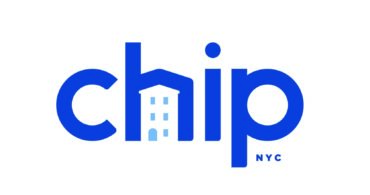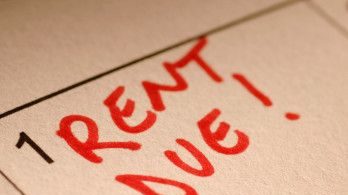Survey: Roughly 136,000 Rent Regulated Renters In Arrears
(New York, NY) — An estimated 136,000 renters in rent-stabilized buildings are more than two months behind on rent, and roughly 43,000 of them are more than $15,000 in arrears, according to a new survey by the Community Housing Improvement Program (CHIP). Unfortunately, less than half of the tenants in arrears have applied to the Emergency Rental Assistance Program (ERAP).
CHIP estimates that only about 58,000 renters in rent-stabilized buildings have applied for the emergency rent assistance. That is about 43%. CHIP’s survey also estimates that more than 25,000 renters who have received ERAP funds are now more than two months behind in rent.
“If you look at just the renters in rent-stabilized buildings, they have more than $1 billion in rent arrears. Statewide, the amount of rent owed is definitely double that and may be three times as much,” said Jay Martin, executive director of the CHIP.
The survey was conducted from February 15-17. The sample size was 49,800 units in rent-stabilized buildings.
###
October Rent Survey
Worsening Vacancy Rates Suggest More New Yorkers Give Up On City
(New York, NY) — Thousands of housing providers are struggling, according to a survey of the members of the Community Housing Improvement Program (CHIP). Some are in dire straits. Without help from the government, more than 15% of respondents say they do not think they’ll be able to make property tax or water and sewer payments in January.
“We are in the eighth month of depressed rent collection and tens of thousands of people have fled the city leaving apartments vacant. While some owners can sustain this type of hit, more than one in ten cannot—and that is a crisis for affordable housing in New York,” said Jay Martin, executive director of CHIP.
Survey respondents reported that 16.41% of residential tenants paid no rent by the middle of October. This is an improvement from last month when 19.43% reported that their residential tenants paid no rent. The reported vacancy rate among respondents ticked up to 12.81% from 12.55% in September. Survey respondents say their vacancy rate in February, before the pandemic, was 3.02%.
“The improved rental collections coupled with the rising vacancy rates reflect a certain population of renters who have ‘dropped out’ of their apartment searches in the city and are no longer in leases,” said Martin.
In the survey, CHIP counts units that are vacant but not currently listed for rent. The mass exodus from New York City has left thousands of units vacant and available for rent, but there are also units that have become vacant and need significant renovations before being rentable. In many instances, property owners do not have the capital or cannot secure funding from lenders to fix up these apartments and bring them back to market, especially if the units are rent regulated and have low legal rents.
“Elected officials cannot tax, fine or regulate their way out of this current housing crisis. Recently proposed ideas like a tax on vacant apartments are just going to continue the downward spiral that has already begun. If the government adopts some of the ideas being pushed by activists whose stated agenda is to bankrupt housing providers, then low-income tenants are the ones who will suffer,” said Martin. “Lawmakers need to attract people back to the city by cutting the costs of operating housing, lowering property taxes on affordable housing, ,and by easing regulations so owners can lower rents,” he added.
The survey respondents represented the owners and operators of more than 75,000 units of housing. The majority of buildings surveyed are older than 1947 and require significant maintenance costs. The geographic breakdown of buildings surveyed is: 41% in Manhattan (19.5% Core Manhattan; 21.5% Upper Manhattan), 19.1% in Brooklyn, 19.6% in The Bronx, 16% in Queens and 4.3% on Staten Island.
CHIP is a housing advocacy organization whose members are small- and medium-sized owners and operators of multifamily rental housing. Collectively we represent more than 400,000 units of rental housing, the large majority of it being rent-stabilized housing. Members report that they have seen an aggregate loss of rental income of $750 million dollars since the start of the COVID-19 emergency.
###
New York Voucher Programs Need Immediate Reform
(New York, NY) — In light of a recent lawsuit by Housing Rights Initiative alleging source of income discrimination against Section 8 voucher holders, the Community Housing Improvement Program (CHIP) is calling for city, state and federal leaders to streamline and improve the voucher program, and for increased enforcement against brokers and housing providers who engage in source of income discrimination.
“One thing everyone can agree on is the system doesn’t work. Tenants, housing providers, and elected officials all see the failings of the current voucher system,” said Jay Martin, executive director of CHIP. “We have been working directly with elected officials to try and provide housing for voucher holders during the pandemic and frankly, the bureaucracy is infuriating. A seamless voucher system is the pathway to truly affordable housing for low-income families, but the government tends to get in the way.”
The current patchwork of programs is a bureaucratic nightmare. It is confusing, underfunded, and enforcement is lacking. Additionally, city, state and federal systems have different requirements and regulations, creating further confusion and an administrative nightmare for housing providers. Some voucher programs have even been found to be improper because of the restrictions they place on owners. The allegations made in the recent lawsuit filed in the U.S. District Court Southern District of New York, demonstrate that inefficiencies in the voucher system fail tenants in need.
“There must be no tolerance for income discrimination. The only way to truly eliminate it is to ensure the voucher program is fully-funded, and streamline verification processes so that a voucher holder is on the same level as a renter who can afford the full rent,” Martin said.
The biggest hurdle to placing voucher holders in permanent housing is still the economics. In many cases, the vouchers under city programs do not pay enough to secure adequate housing. CHIP supports City Council’s Intro 146 of 2018, sponsored by Stephen Levin, which would increase the voucher amount. We also support the Home Stability Support bill, proposed by Assemblyman Andrew Hevesi and State Senator Liz Krueger, which would increase voucher options.
“Both of these bills are great steps towards making the voucher system better. While we support a larger effort to tackle this issue, it should not delay the passage of these programs, which will help thousands of tenants immediately,” Martin said.
CHIP also calls on city and state officials to provide more counseling and educational resources for tenants with vouchers and training for housing providers.
###
SURVEY: Rent-Regulated Tenants Owe $1.1 Billion In Arrears
(New York, NY) — Between 175,000 and 185,000 rent-regulated tenants are more than two months in arrears according to a new survey by the Community Housing Improvement Program (CHIP). The survey also found that roughly 50,000 tenants owe more than $15,000 in arrears. The total arrears is estimated to be around $1.14 billion.
CHIP’s survey found that 19.42% of residential tenants are more than two months behind in rent. This is a more than 300% increase from February, when 6.14% of rent-regulated tenants were more than two months in arrears.
“To solve a problem we first have to understand the scale of the problem,” said Jay Martin, executive director of CHIP. “Clearly the $1.3 billion coming in federal rental assistance will be a huge help if it is properly allocated toward owed arrears. Still, these numbers show that renters and housing providers will need more relief, either from the federal government or through creative strategies on the state level even after this initial allocation of relief.”
The average renter in arrears owes about $6173.21 according to CHIP’s survey. That is roughly 4 and a half months rent according to the Rent Guidelines Board, which estimates that the average monthly rent for a rent-regulated apartment is about $1400. The survey also found that 5.64% of tenants are more than $15,000 in arrears, or more than 11 months behind on average rent.
“We have a clear blueprint to protect renters from eviction and the housing system from collapse. The government needs to pay the rent for those who can’t afford it,” Martin said. “The government has mandated that owners provide housing without compensation throughout the public health crises regardless of the renters’ ability to pay. Our owners have done their part, now the government must do their part to help pay for the cost of housing thousands of people.”
The rent arrear data is only part of the picture. CHIP’s December survey of its members found the true vacancy rate to be 11.8% when calculating in apartments not listed for rent because of surplus supply or not available for rent because of renovation needs.
CHIP represents the owners and operators of more than 400,000 units of rent-regulated housing. The survey size was roughly 40,000 units.
###
August Rent Survey
Vacancy Rates Skyrocket, Rent Collection Remains Low But Steady
(New York, NY) — New York City housing is now facing a double whammy of crises: skyrocketing vacancies and COVID-related income loss. A recent survey of CHIP members found that the residential vacancy rates have at least tripled since February. According to survey responses, the vacancy rate now stands at 10.78%, up from 3.38% in February, for our members.
This jump in vacancies isn’t only at the high end of the market, although it is more pronounced for more expensive units. Our sampling found that the vacancy rate for apartments with rents below $2000 a month has more than doubled, coming in at 7.08% in August, up from 3.06% in February. This indicates that even some of the city’s entry level apartments are not being rented anymore. CHIP members report that they are significantly cutting rents and offering multiple months of free rent, and are still struggling to attract tenants.
“New York City housing is infected with COVID with no vaccine in sight. After more than four months of depressed rent collections, housing providers are now facing a grim long term prospect as people flee the city,” said Jay Martin, Executive Director of the Community Housing Improvement Program (CHIP).
CHIP has also been surveying our members each month to track rent collection. Our members reported that 17.23% of residential tenants have not paid rent so far in August. In July, our survey found that 17.72% of residential tenants did not pay by the middle of the month. While the collection rate is holding steady month to month, operating income is still dramatically down because of the rising vacancy rates.
“Tens of thousands of New Yorkers are still struggling to pay their rent. They are crying out for help and federal lawmakers have been asleep at the switch,” said Martin. “The lack of action on robust relief for renters will likely cost hundreds of small property owners their livelihoods and thousands of renters their homes.”
CHIP also surveys members about commercial property collection. A majority of our members have first floor retail space that subsidizes rent-stabilized apartments above. Our survey found that roughly half (49.48%) of commercial tenants have paid no rent in August. Additionally, many CHIP members report that they have already had to agree to payment plans or other deals with restaurants and retail stores, so total rent collection is most definitely worse than 50 percent.
The survey was conducted between August 13 and August 18. The sample size includes the owners and operators of a little more than 80,000 units of housing, the majority of which are pre-1947 rent stabilized buildings. Roughly 30% of buildings responding were in Manhattan, and roughly 20% were in the Bronx, Queens and Brooklyn respectively.
CHIP represents the owners and operators of more than 400,000 units of rent regulated housing in New York City. In our survey, we asked members for comments on the current state of the industry. Overwhelmingly they expressed dire concern for the growing number of vacancies in the city. Here are a few of those comments:
“For the first time in 40 years, we have a tremendous oversupply in housing as families are fleeing the city.”
“Vacancy rates are killing our business. It’s not even pricing – there is a frightening dearth of demand.”
“In 46 years operating properties, vacancies have never been this bad. It’s more than three times worse than it has ever been. We have reduced rent over 20 percent just to keep renting.”
“Vacancy is up and apartments are much harder to rent – have to reduce rents and give concessions. Tenants not paying rent feel that they do not have to and that they are protected by our elected officials.”
“Rent collections in our Bronx and upper Manhattan buildings are 80% or better, but the small mom and pop commercial tenants need assistance similar to the rent relief program, as we desperately need these businesses to exist for our neighborhoods.”
“About half of the apartments are vacant now with more tenants asking to be let out of their leases. Landlords will have a hard time meeting their tax and mortgage obligations by next month.”
###
September Rent Survey
Survey Shows Rent Pain Continues
CHIP Proposes Solutions To Ease Affordable Housing Woes
(New York, NY) — More than 19% of residential tenants have paid no rent in September and the residential vacancy rate has climbed to 12.55%, according to a survey of the members of the Community Housing Improvement Program (CHIP). The results show that conditions are slowly getting worse. In August, members reported a vacancy rate of 10.78%, and slightly more than 17% of renters paid no rent by the middle of the month.
“For a sixth straight month, housing providers have borne a huge financial burden due to the COVID-19 emergency with little help from the government. We need solutions now. We can no longer wait for the federal government to bail us out,” said Jay Martin, executive director of CHIP.
Our members also report that they are offering concessions averaging a net effect of 1.4 months of free rent to tenants (either through dropping the asking rent or giving a month or two of the lease term rent free) in order to be more competitive on the rental market and combat the growing number of vacant units. Rent-stabilized tenancies, however, are not seeing the same level of rent reductions.
Many CHIP members also have first floor commercial space in their buildings. Our survey responses indicated that roughly half of all commercial tenants paid no rent in September, which was consistent with our August survey.
CHIP received responses from the owners and operators of at least 80,000 units of housing in New York City. The majority of properties surveyed were rent-stabilized. Roughly 40% of responses came from Manhattan, with about 20% coming from Bronx, Queens and Brooklyn respectively. Less than 2 percent of responses came from Staten Island.
“At this point, we cannot expect the federal government to bail out New York City from our current housing crisis. City and State leaders must take steps to stop the bleeding and stabilize the affordable housing ecosystem for both tenants and their housing providers,” said Martin.
CHIP is proposing several solutions to help stabilize the housing market that we are asking the State Legislature to consider. They are:
Reinstate Preferential Rents
The June 2019 rent laws eliminated the usefulness of preferential rents for tenants of rent-stabilized buildings. Under the current system, rent-stabilized housing providers cannot offer temporary discounts on rent without becoming locked into that reduced rent for as long as the renter lives in the apartment. This creates a barrier for these housing providers to provide lower rents, whether because there is a dip in the market or a tenant is experiencing temporary hardship. Rather than being able to offer a discount for one lease term, once an owner charges a lower preferential rent, every future lease must also include the discount. So when there are lulls (or even dips) in the rental market, like there are now, rent-stabilized tenants don’t receive the benefit because the 2019 HSTPA removed the flexibility of preferential rents. If the laws were altered to once again allow this flexibility, more than 50% of CHIP members say they would offer lower rents to rent-stabilized tenants who negotiate for a lower price in their lease renewals or need immediate help because of financial struggles. And roughly 55% said they would be likely to lower the asking rent for a vacant stabilized apartment to remain competitive in a COVID devastated rental market .
Implement Tenant Rent Forgiveness and Rent Increase Tax Offset Program.
New York currently offers SCRIE and DRIE programs to offset rent increases for seniors and disabled persons with property tax credits for housing providers. The programs have been incredibly successful in stabilizing the lives of some of the city’s most vulnerable renters. COVID-19 has dramatically increased the number of at-risk New Yorkers, creating a need to extend this same program to all renters in need. CHIP proposes a pilot program of $500 million in property tax credits for renters who can prove financial hardship caused by COVID-19. Rather than relying on the federal government for relief that isn’t coming, this proposal would allow the city to help housing providers absorb the continuous increases in building operating costs while at the same time providing desperately needed relief to a population of renters so they can stay in their homes and be free of worrying about future increases in rent.
Under this program, renters who can demonstrate the necessary financial hardship can qualify for rental arrears forgiveness that would be offset by a dollar-for-dollar reduction in the housing provider’s property tax payment. A targeted program of tax relief would both insulate tenants from future rent increases and also provide necessary relief on operating expenses. No matter the cost, it is a proportionally small price to pay to stabilize the city’s housing and keep as many people in their homes as possible.
Expand Funding To COVID Rent Relief Voucher Program.
The legislature passed the Emergency Rent Relief Act of 2020 (S8419 / A10522) in June, and Homes and Community Renewal (HCR) began processing applications in August. The initial funding for the program was $100 million. CHIP members report payments through the Act have not covered all of a tenant’s existing arrears but they did bring much needed operating income to the building. Our members (the owners and operators of about 15% of NYC’s residential rental properties) estimated that they have lost at least $500 million in operating income since the start of the pandemic. The existing program is a start to filling this massive gap, but it needs more funding and to expand its eligibility requirements to cover more renters and more arrears. The Act only covers rent losses from April to July, and does not cover the entirety of arrears that were owed by tenants but rather doled out benefits based on a formula that links payments to loss of income and percentage of income paid towards rent.
###



